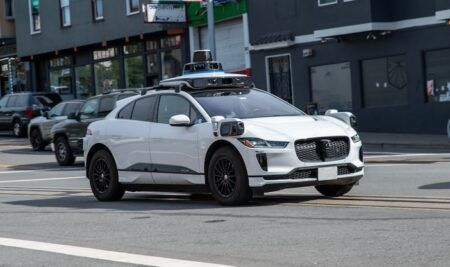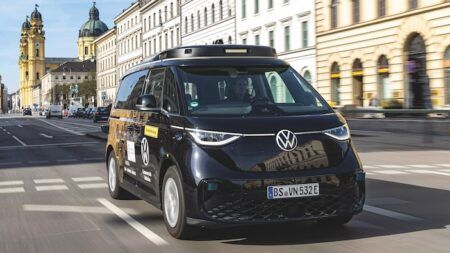Self-driving shuttles have started operating on the streets of Columbus – the winner of USDOT’s Smart City Challenge in 2016 – as part of an initiative announced in July by Smart Columbus and Ohio Department of Transportation’s (ODOT) DriveOhio program.
The autonomous shuttle project is designed to provide education and a first-hand experience with intelligent transportation for residents and visitors. The low-speed shuttles will be operated by Michigan-based startup May Mobility without passengers initially, while the route is tested and mapped, with the fleet to begin accepting passengers in December.
The all-electric vehicle is equipped with a powerful array of sensors and intelligent software designed to move passengers along the downtown Scioto Mile loop. The vehicles will have a panoramic glass roof that allows riders to enjoy views of the city skyline while they sit in a four-seat ‘campfire’ configuration in the rear of the vehicle. In the front cabin, passengers have access to an immersive 49in digital display that provides system and route information. An operator will oversee the operation of the vehicle to ensure each rider has the best experience, and will also have the ability to take control of the vehicle at any time, if necessary.
Once testing and mapping are completed, the shuttles will service destinations along Columbus’s Scioto Mile, which include the Center Of Science and Industry (COSI), the Smart Columbus Experience Center, Bicentennial Park, and the new National Veterans Memorial and Museum.
The downtown shuttle is the first of a three-phased deployment that will be managed through the public/private partnership and will eventually include shuttles deployed on multiple routes. The research project will test the practicalities of the system while enhancing the mobility options for residents and visitors. It will evaluate the abilities of the technology to operate on public roadways in Ohio in all weather conditions and will help the project partners better understand the infrastructure required to implement and support the operation of the technology. Simultaneously, the researchers hope to expose residents to this innovative technology by providing free rides between local educational destinations.
“Cities are seeking cost-effective transportation services that will improve congestion in urban cores, and self-driving shuttles can offer a huge relief,” said Edwin Olson, founder and CEO of May Mobility. “As we work toward a future where people can drive less and live more, we’re thrilled to be working with partners from Columbus to provide a new transportation experience that will make traveling through Columbus safe, reliable and personal.”
Mayor Andrew J Ginther commented, “We’re proud to have the first self-driving shuttle in Ohio being tested on the streets of Columbus. This pilot will shape future uses of this emerging technology in Columbus and the nation. Residents win when we add more mobility options to our transportation ecosystem, making it easier to get to work, school or local attractions.”
DriveOhio’s executive director, Jim Barna, added, “This pilot is a big step in our statewide plan. We want to enable other local governments throughout the state to safely test, operate and evaluate these self-driving shuttles.”




